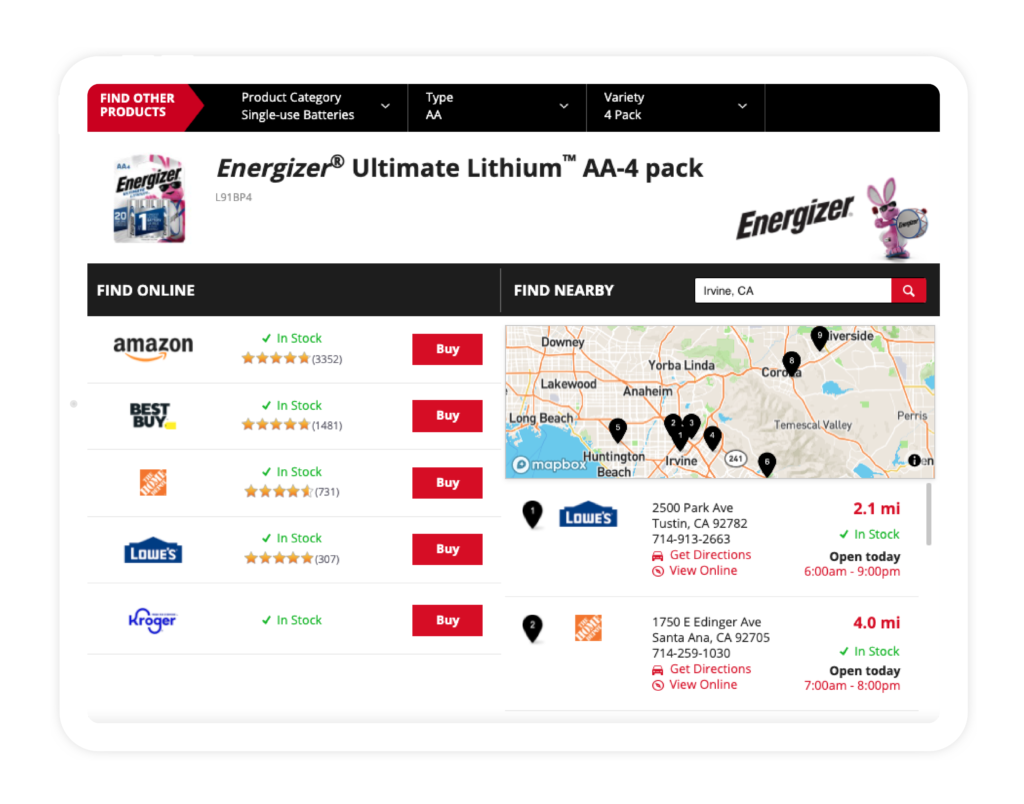When you were a kid, there was probably something that you thought was terrifying but wasn’t really all that scary. Spiders are a common one. Maybe you still carry that same irrational fear to this day. But sometimes as we become adults, we are thrust into the position of family spider hunter. For the good of our kids, we have no choice but to face our fear, learn not to tremble at the sight of an arachnid, and maybe even crush a few creepy-crawlies (and sometimes we go on to create an entire business with “Spider” in the name 😏).
The world of social media is another monster lurking in the closet that might be a little more imposing in our minds than in real life. But, sometimes we are thrust into the position of being the Social Marketing Manager or Ecommerce Manager and have no choice but to face our fear, learn not to tremble at the sight of a social campaign, and perhaps even crush it.
Take “social commerce.” The term isn’t new, but new expressions of it are emerging. Yahoo first used the concept of social commerce online back in 2005 when they introduced the “Shoposphere” and “Pick Lists,” where users could create lists of products available through Yahoo Shopping and provide their personal thoughts about them.
As social media platforms emerged, social commerce grew to encompass the various ways businesses used social media to support the shopping experience, drive sales, and draw attention to their products.
Let’s explore what social commerce is and how it’s evolving.
What is social commerce?
Social commerce is the process of using digital social spaces to sell, discuss, and shop for products. While some definitions isolate the term to describe how social media platforms are transforming into marketplaces, it has included a much broader range of activities for well over a decade.
Digital advertising that caters to individual users (such as Facebook Ads or Google Ads) is social commerce. Posting photos of your products on social media is social commerce. Linking to your product pages and sharing videos that promote your products are too.
Social commerce even includes activities you have no control over. User-generated content such as forum threads, reviews, posts, and tweets all fall under the umbrella of social commerce when they serve to influence how people think about products and help people make decisions about them.
It’s a broad term. And if you work in ecommerce, you’ve probably heard it conflated with another broad term: shoppable media.
Social commerce vs. shoppable media
While the two phrases sound the same, they are very much different. Shoppable media is a function within social commerce that enhances the customer journey. It allows consumers to choose their preferred retailer, while brands can control the path to purchase. Shoppable media makes it all possible from any social commerce content, whether it’s a video, image, review, or something else. It gives viewers all the context and functionality information they need to shop.
Just as social commerce blurs the line between social media and shopping, shoppable media blurs the line between traditional content and shopping, and it’s not isolated to social media.
Shoppable media can appear anywhere: in a blog post, on a landing page, on a social platform — where it would also be an example of social commerce — even on physical product packaging.
Social commerce and shoppable media both refer to the convergence of shopping and social media, where content merges engagement with sales. However, when social commerce is enhanced with shoppable media, so much more is possible.
Take an Instagram post with tagged products for example. While the comments that advocate for or recommend against these products is social commerce, it’s only shoppable media if the consumer can click through, shop retailer choices, and act on the urge to buy.



So even though these two phrases sound interchangeable, they’re not. Remember that social commerce is an entire category, while shoppable media is but one function within that category — just as apples and Asian pears may look the same, but one tastes completely different than the other.
How social commerce is evolving
Social commerce has come a long way since Yahoo’s Pick Lists. In recent years, there are three major ways that it has evolved.
Native checkout
Checkout on Instagram opened the door to a brand new form of social commerce: native checkout. By facilitating the entire checkout experience within Instagram, the social media app empowered its users to buy products right from their feeds. Instead of simply providing a platform for brands to interact with customers, Instagram effectively became a retailer.
Initially, Checkout on Instagram was only available to a handful of elite brands, but it’s becoming increasingly accessible for ecommerce brands of all shapes and sizes. And while Instagram, Facebook, and Pinterest were the first social platforms to experiment with this form of social commerce, they won’t be the last.
Brands that want to utilize native checkout experiences need to rethink their relationship with social platforms. And since social platforms simply leverage existing distribution systems and supply chains, brands need robust direct-to-consumer channels to use native checkout as well.
User marketplaces
In the old days, someone who wanted to sell their old sneakers on Facebook had to post it to all their friends, hoping someone they knew might be interested. But in recent years, there’s a dedicated marketplace for that. Now, consumers can resell products to locals they don’t know, or even ship their items further away.
This “Craigslistification” of social platforms has created new backchannels for third-party sellers who don’t want to attract a brand’s attention on a marketplace like Amazon or Walmart.
Like it or not, these marketplaces are part of modern social commerce, too.
Shoppable media
Shoppable media is one of the more exciting ways social commerce has matured. Today, brands can use advanced tools like PriceSpider’s Where to Buy to provide consumers with more choice and context before they click through a link. Instead of merely driving everyone to your D2C store, you can link to several retailers from a single intuitive menu, along with pricing information and ratings pulled right from the corresponding product page. Like this:

When consumers see your products, they already have an ideal path to purchase in mind, and factors like price and ratings can lead them to choose one path over another. If they want your product but don’t see their preferred path to purchase, they’ll often hop over to Google or a retailer’s search engine and continue shopping there.
You can’t tell when someone does this. And if they buy, you can’t track the sale.
Surfacing the information consumers need to shop and highlighting more than one path to purchase gives you greater control over the shopping experience. And with Where to Buy, you can track every sale that comes through your shoppable media, even if someone purchases from a retailer or they don’t buy right away.
Want to see how it works?
Schedule a demo of Where to Buy, and ask us about shoppable media.

